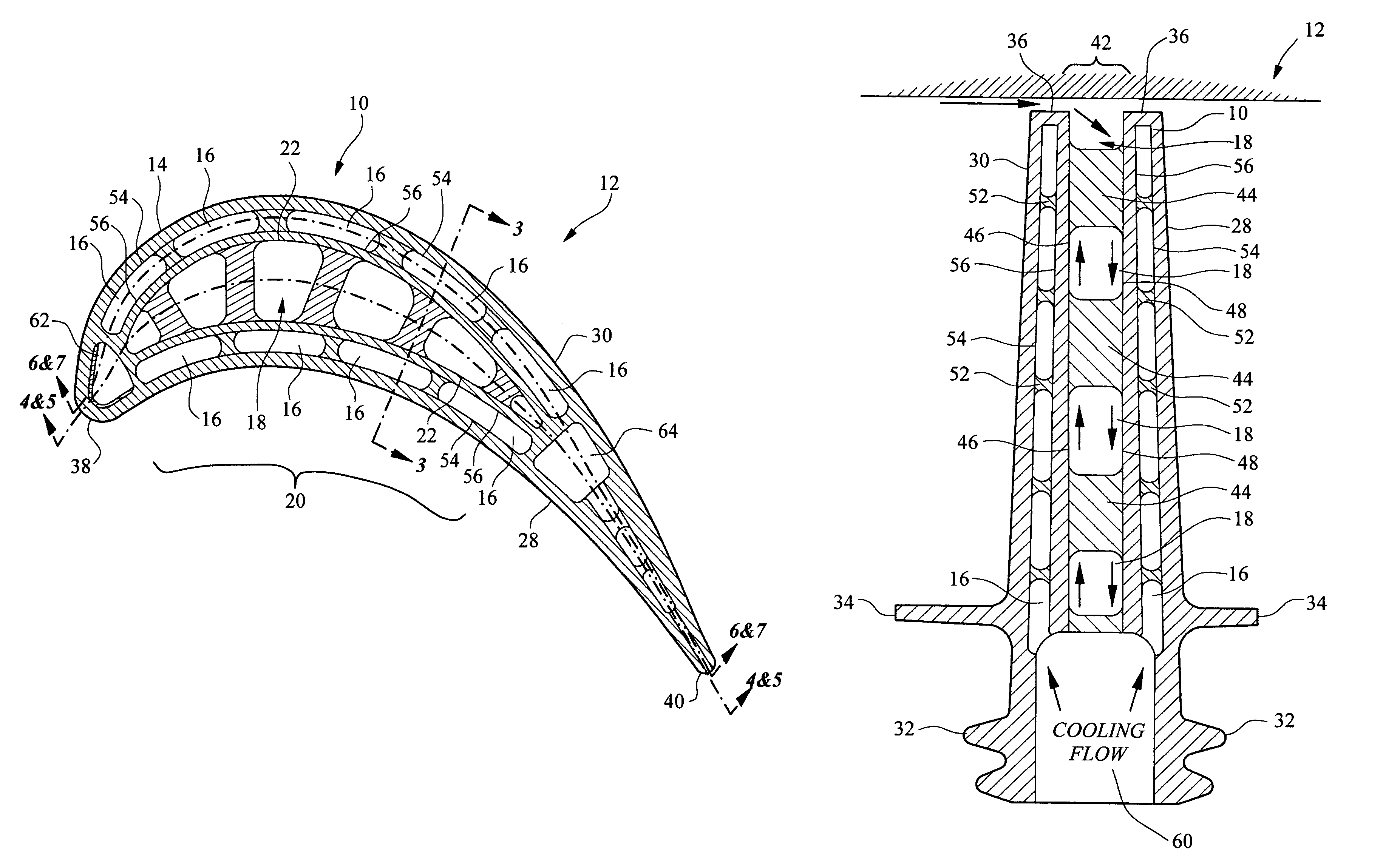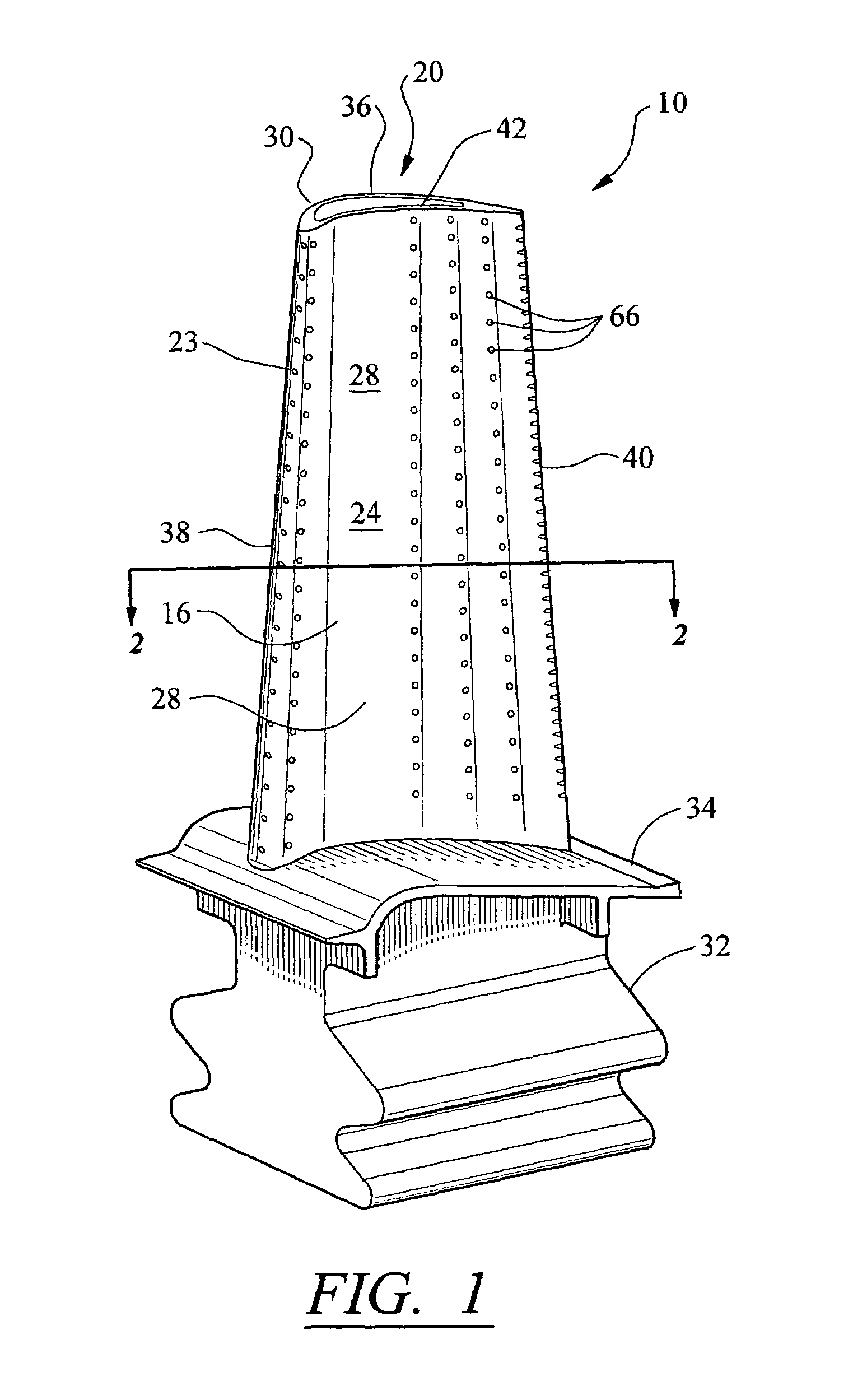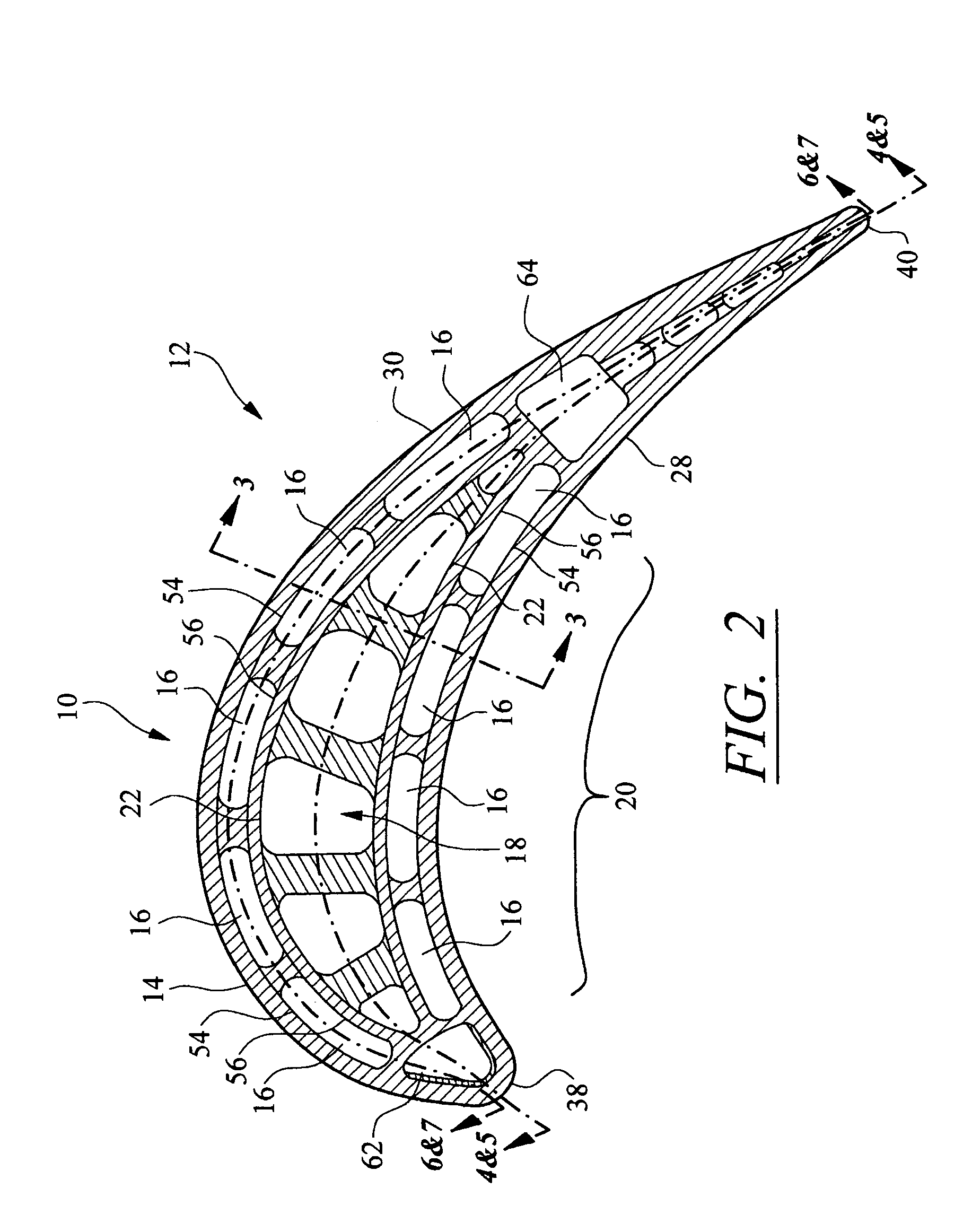Turbine airfoil with outer wall cooling system and inner mid-chord hot gas receiving cavity
a cooling system and airfoil technology, applied in the field of hollow turbine airfoils, can solve the problems of reducing the mechanical life cycle of airfoils, large thermal gradient between these regions, and the likelihood of failure, so as to reduce the thermal gradient in the outer wall materials, the effect of increasing the life of the airfoil
- Summary
- Abstract
- Description
- Claims
- Application Information
AI Technical Summary
Benefits of technology
Problems solved by technology
Method used
Image
Examples
Embodiment Construction
[0021]As shown in FIGS. 1-7, this invention is directed to a turbine airfoil 10 having a cooling system 12 in inner aspects of the turbine airfoil 10 for use in turbine engines. The cooling system 12 may be configured such that adequate cooling occurs within an outer wall 14 of the turbine airfoil 10 by including one or more cavities 16 in the outer wall 14 and configuring each outer cooling cavity 16 based on local external heat loads and airfoil gas side pressure distribution in both chordwise and spanwise directions. The chordwise direction is defined as extending between a leading edge 38 and a trailing edge 40 of the airfoil 10, and the spanwise direction is defined as extending between a tip 36 of the airfoil 10 and a root 32. The turbine airfoil 10 may include a hot gas receiving cavity 18, as shown in FIG. 3, positioned in the mid-chord region 20 of the turbine airfoil 10. The hot gas receiving cavity 18 allows hot combustion gases to flow into central aspects of the turbine...
PUM
 Login to View More
Login to View More Abstract
Description
Claims
Application Information
 Login to View More
Login to View More - R&D
- Intellectual Property
- Life Sciences
- Materials
- Tech Scout
- Unparalleled Data Quality
- Higher Quality Content
- 60% Fewer Hallucinations
Browse by: Latest US Patents, China's latest patents, Technical Efficacy Thesaurus, Application Domain, Technology Topic, Popular Technical Reports.
© 2025 PatSnap. All rights reserved.Legal|Privacy policy|Modern Slavery Act Transparency Statement|Sitemap|About US| Contact US: help@patsnap.com



